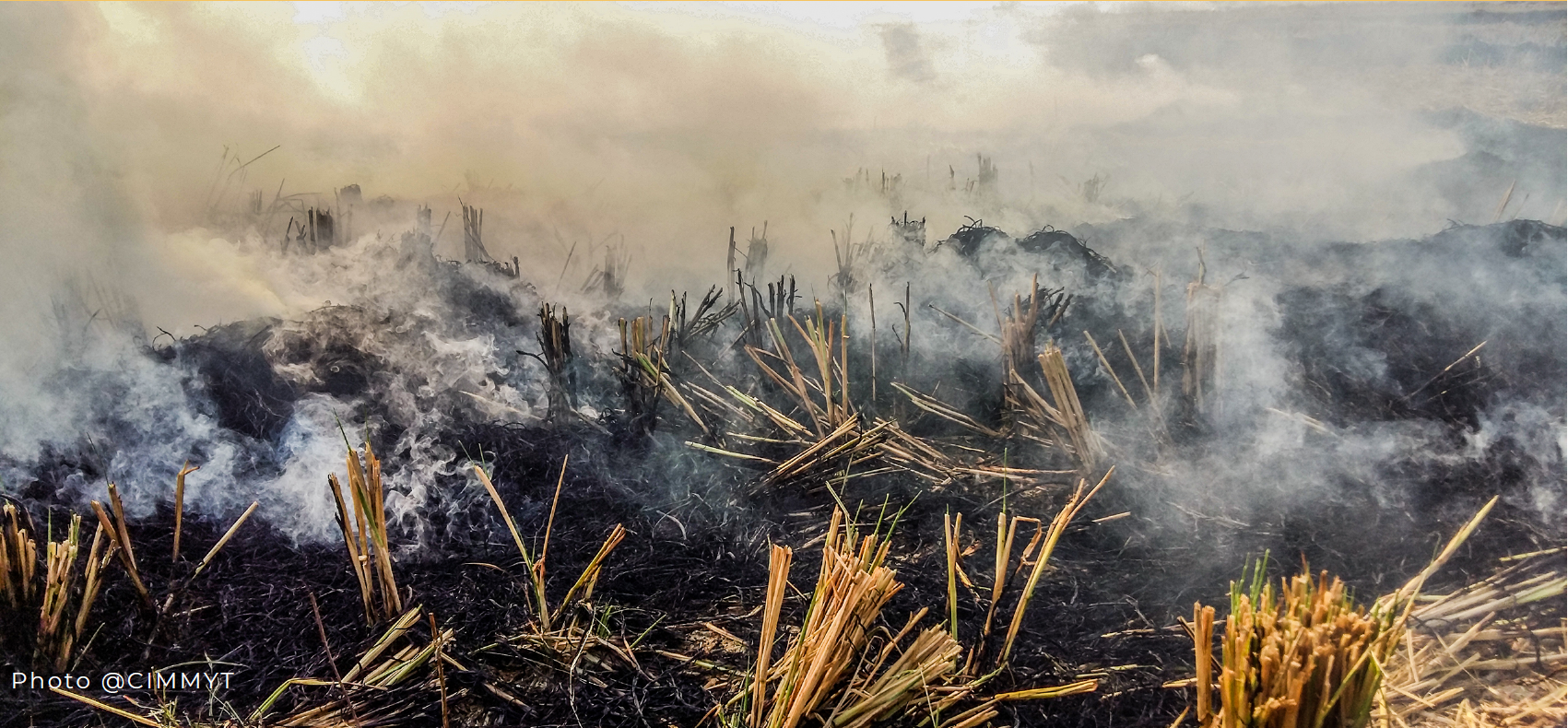Residue burning in agriculture, particularly across South Asia’s rice-wheat systems, persists despite bans, creating negative externalities such as air pollution while undermining soil health and productivity. Conservation agriculture (CA) offers a regenerative pathway by integrating zero tillage, residue retention, and crop diversification to mitigate greenhouse gas emissions, improve soil health, and enhance water use efficiency. However, adoption remains low, with current policies and carbon markets providing insufficient incentives for farmers to shift away from burning practices.
Why Agrobiodiversity Matters
Residue burning disrupts biological communities and agroecosystem services, a dimension often overlooked in policy discussions. A recent global review by CIMMYT and partners synthesizing evidence from 250 peer-reviewed articles highlights:
- 40% of biodiversity traits measured showed negative impacts from residue burning, with declines in beneficial organisms such as earthworms, beetles, spiders, ants, and microbial communities critical for soil health, nutrient cycling, pest regulation, and pollination.
- Natural predators and soil biodiversity are harmed, while rodent pests and parasitic nematodes often thrive after burning, increasing future pest burdens.
- Air pollution pathways from burning may significantly affect arthropods and birds essential for ecosystem functioning.
- Most studies originate from the Global North, despite residue burning being concentrated in South Asia, underscoring the need for regionally grounded research.
Gaps in Current Approaches
Policies relying on regulatory bans and limited subsidies, along with low carbon credit prices (often under US$10/ton CO2e), do not adequately incentivize farmers to adopt CA and residue retention practices. Additionally, carbon credit schemes rarely account for biodiversity co-benefits, missing opportunities to align ecological sustainability with incentives for farmers.
Pathways for Change
To transition residue management into a strategy that advances biodiversity conservation and climate resilience, the following are key:
- Broaden residue management policies to explicitly include agrobiodiversity considerations.
- Redesign carbon markets to account for biodiversity co-benefits, noting that prices of carbon credits with verified biodiversity co-benefits are >30% higher.
- Invest in bundled incentives that combine carbon, biodiversity, and soil health benefits to enhance farmer participation, with pilots suggested in Punjab and Haryana.
- Strengthen the evidence base in South Asia with targeted ecological studies to inform biodiversity-friendly CA practices.
- Integrate biodiversity indicators into monitoring frameworks to align CA scaling with biodiversity goals.
Looking Ahead
Residue burning must shift from being seen solely as an emissions issue to being recognized as an ecological crisis. CA and other non-burning practices can contribute to biodiversity conservation, long-term agricultural resilience, and climate goals if farmers are compensated for the public goods they generate.
A forward-looking strategy will require:
- Incentives that go beyond carbon.
- Measurement, Reporting, and Verification (MRV) systems that incorporate biodiversity indicators.
- Institutional coordination across agriculture, environment, and health sectors.
For a deeper understanding of how residue management can advance agrobiodiversity, strengthen climate resilience, and support sustainable farming, we invite you to explore the full analysis.
- Read the policy brief: Agrobiodiversity Impacts Matter in Crop Residue Management Policies – Policy Brief
- Access the full article: Parambil-Peedika et al. (2025) in Science of the Total Environment.
It offers clear evidence and actionable pathways to align policy and practice for healthier, more productive agrifood systems.


 Climate adaptation and mitigation
Climate adaptation and mitigation 
